Review Questions - Click On The Picture To Begin...

- All of these can help reduce the chance of a truck rollover
- At night, drive slow enough to see obstacles with your headlights before it is \ too late to change lanes or stop gently
- Look far enough down the road to avoid being surprised and having to make a sudden lane change
- Slow down to a safe speed before going into a turn
Quote From The CDL Manual:
Steer gently and smoothly when pulling trailers. If you make a sudden movement with your steering wheel, you could tip over. Follow far enough behind other vehicles (at least 1 second for each 10 feet of your vehicle length, plus another second if going over 40 mph). Look far enough down the road to avoid being surprised and having
- The rear trailer
- Both trailers are equally as likely to turn over
- The tractor is more likely to turn over than either trailer
- The front trailer
Quote From The CDL Manual:
Trucks with trailers have a dangerous "crack-the-whip" effect. When you make a quick lane change, the crack-the-whip effect can turn the trailer over. There are many accidents where only the trailer has overturned.
"Rearward amplification" causes the crack-the-whip effect. The rear trailer is twice as likely to turn over as the tractor. You can roll the last trailer of triples 3.5 times as easily as a 5-axle tractor-semi.
TruckingTruth's Advice:
When pulling more than 1 trailer, the rear-most trailer is always at a higher risk of overturning than the front trailer.
- Trucks pulling 2 trailers
- Trucks pulling 3 trailers
- Trucks pulling 1 trailer
- All trucks, regardless of how many trailers, experience the same amount of Rearward Amplification
Quote From The CDL Manual:
The rear trailer is twice as likely to turn over as the tractor. You can see that triples have a rearward amplification of 3.5. This means you can roll the last trailer of triples 3.5 times as easily as a 5-axle tractor semi.
- Rollover accidents rarely result in death
- More than 1/4
- More than half
- More than 3/4
Quote From The CDL Manual:
More than half of truck driver deaths in accidents are the result of truck rollovers
- When a truck is fully loaded
- When a truck is 1/2 loaded
- When a truck is 1/4 loaded
- When a truck is empty
Quote From The CDL Manual:
Control your speed whether fully loaded or empty. Large combination vehicles take longer to stop when they are empty than when they are fully loaded. When lightly loaded, the very stiff suspension springs and strong brakes give poor traction and make it very easy to lock up the wheels. Your trailer can swing out and strike other vehicles. Your tractor can jackknife very quickly. You also must be very careful about driving "bobtail" tractors (tractors without semitrailers). Tests show that bobtails can be very hard to stop smoothly. It takes them longer to stop than a tractor-semitrailer loaded to maximum gross weight.
- Ten times as likely
- Twice as likely
- Three times as likely
- Four times as likely
Quote From The CDL Manual:
More than half of truck driver deaths in accidents are the result of truck rollovers. When more cargo is piled up in a truck, the "center of gravity" moves higher up from the road. The truck becomes easier to turn over. Fully loaded rigs are 10 times more likely to roll over in a crash than empty rigs.
TruckingTruth's Advice:
Rollover accidents are extremely serious! Slow down before your turns, not during the turn. You can always speed up through a turn, but you may not be able to slow down enough to avoid an accident.
- A tractor without a trailer attached
- A fully loaded truck and trailer
- A parked trailer with no truck attached
- A truck and trailer that is not loaded
Quote From The CDL Manual:
You also must be very careful about driving "bobtail" tractors (tractors without semitrailers). Tests show that bobtails can be very hard to stop smoothly. It takes them longer to stop than a tractor-semitrailer loaded to maximum gross weight.
- There is no way to stop a trailer skid once it begins
- Use the trailer hand brake to help straighten out the trailer
- Release the brakes to get traction back
- Try to stop the truck as quickly as possible by pressing as hard as you can into the brake pedal
Quote From The CDL Manual:
Following is the procedure for stopping a trailer skid:
1. Recognize the skid. The earliest and best way to recognize that the trailer has started to skid is by seeing it in your mirrors. Any time you apply the brakes hard, check the mirrors to make sure the trailer is staying where it should be. Once the trailer swings out of your lane, it is very difficult to prevent a jackknife.
2. Stop using the brake. Release the brakes to get traction back. Do not use the trailer hand brake (if you have one) to "straighten out the rig." This is the wrong thing to do because the brakes on the trailer wheels caused the skid in the first place. Once the trailer wheels grip the road again, the trailer will start to follow the tractor and straighten out.
TruckingTruth's Advice:
Make certain you glance in your mirrors while stopping in slick conditions. It is very important to catch a jackknife early. The more the trailer swings into a jackknife, the harder it will be to recover.
- When a trailer jackknife is to the point the trailer makes contact with the tractor
- When the trailer wheels take a more inside path than the tractor wheels during a turn
- Describes why the trailer always follows the same path as the tractor during turns
- When the tractor wheels take a more inside path than the trailer wheels during a turn
Quote From The CDL Manual:
When a vehicle goes around a corner, the rear wheels follow a different path than the front wheels. This is called "offtracking" or "cheating." Offtracking causes the path followed by a tractor-semi to be wider than the rig itself. Longer vehicles will offtrack more. The rear wheels of the powered unit (truck or tractor) will offtrack some, and the rear wheels of the trailer will offtrack even more. Steer the front end wide enough around a corner so the rear end does not run over the curb, pedestrians, other vehicles, etc. However, keep the rear of your vehicle close to the curb. This will stop other drivers from passing you on the right.
TruckingTruth's Advice:
Offtracking is why trucks and large vehicles must swing wide. You often see the bumper stickers which say "this vehicle makes wide right turns" and the reasoning for that is offtracking. Longer vehicles have to swing wide to avoid running the rear of the vehicle (or trailer) up onto the grass, curb, or striking pedestrians or people.
- When turning, the trailer makes a tighter turning radius than the tractor
- The momentum generated by the trailer of a vehicle during long or steep downgrades
- The "crack-the-whip" effect of a trailer when a sudden lane change or quick left or right movement is made
- Another term for a jackknifing trailer
Quote From The CDL Manual:
Rearward Amplification - Trucks with trailers have a dangerous "crack-the-whip" effect. When you make a quick lane change, the crack-the-whip effect can turn the trailer over. There are many accidents where only the trailer has overturned.
- Drive wheel jackknife and trailer wheel jackknife
- Steer jackknife and drive jackknife
- Tractor jackknife and trailer jackknife
- Front jackknife and rear jackknife
Quote From The CDL Manual:
Tractor Jackknife: Rear tractor wheels locked up or spinning.
Trailer Jackknife: Trailer wheels locked and sliding
- When the trailer is loaded to half of its maximum weight
- When the trailer is fully loaded to maximum weight
- All trailers, regardless of weight or cargo placement, have an equal chance of jackknifing
- When the trailer is empty
Quote From The CDL Manual:
When the wheels of a trailer lock up, the trailer will tend to swing around. This is more likely to happen when the trailer is empty or lightly loaded. This type of jackknife is often called a "trailer jackknife"
- Trucks without trailers typically have more traction and drive better in adverse weather conditions
- A truck with no trailer attached will stop very quickly
- A truck with no trailer will be very easy to control during an emergency stop
- It takes a truck with no trailer longer to stop than a tractor-trailer loaded to maximum gross weight
Quote From The CDL Manual:
You also must be very careful about driving "bobtail" tractors (tractors without semitrailers). Tests show that bobtails can be very hard to stop smoothly. It takes them longer to stop than a tractor-semitrailer loaded to maximum gross weight.
TruckingTruth's Advice:
Driving a bobtail (truck with no trailer) can be very dangerous. Trucks were designed to have trailers attached so driving will be difficult when a trailer is not attached.




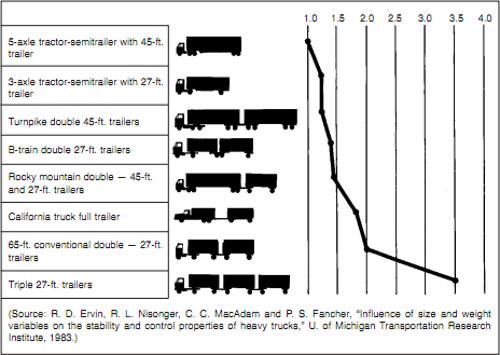
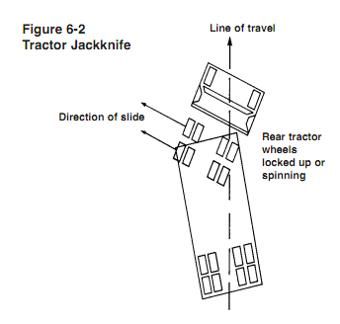
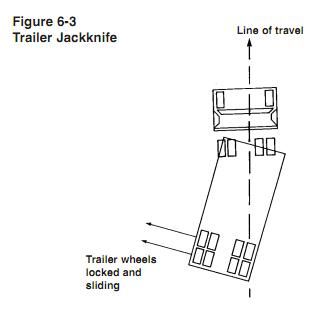
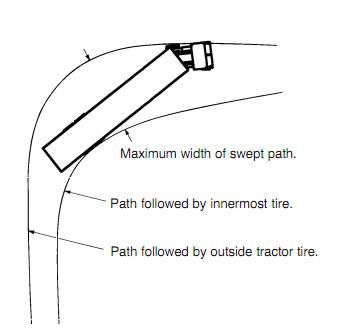
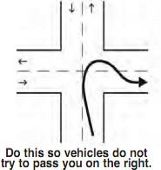





 TT On Facebook
TT On Facebook